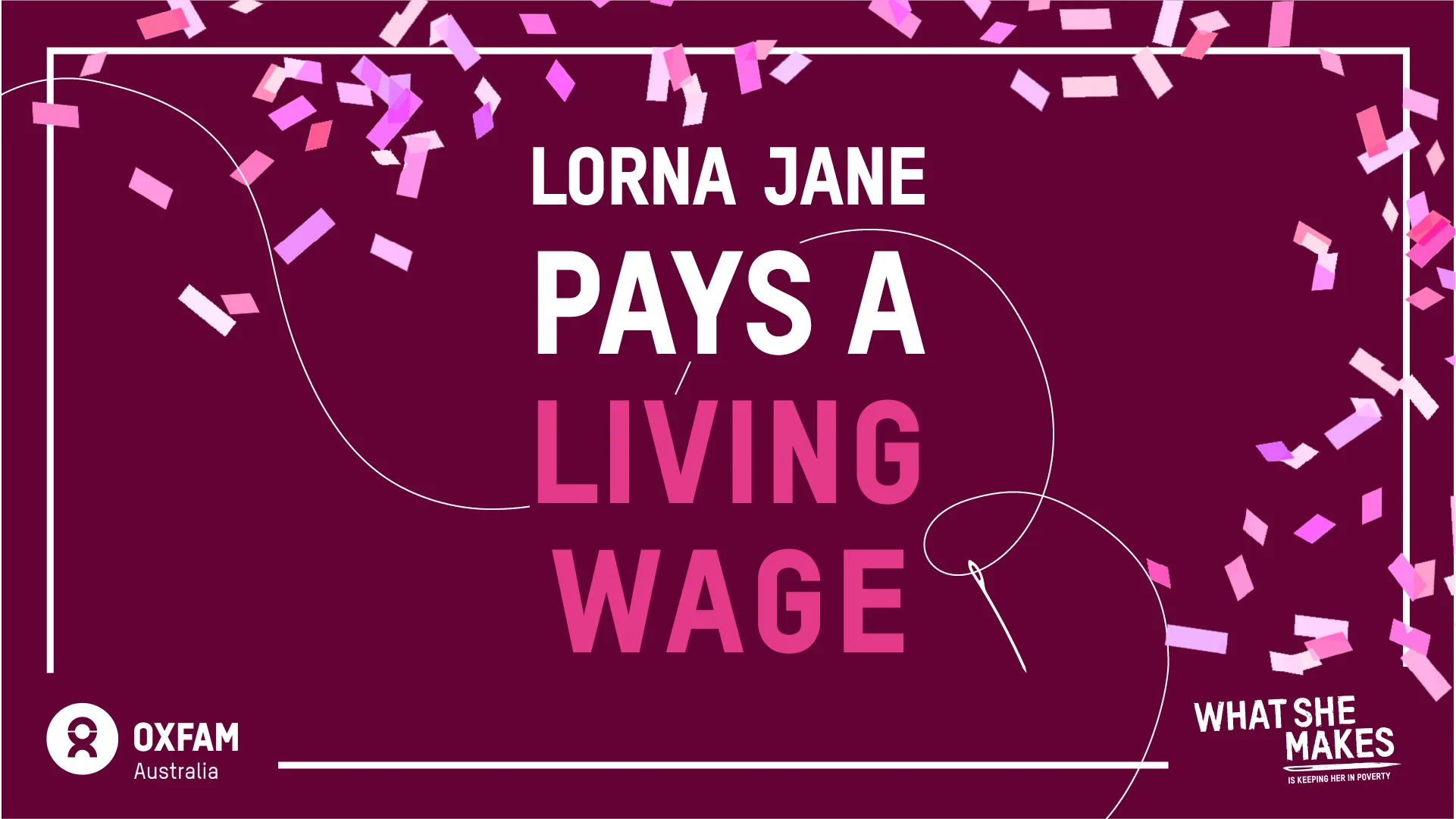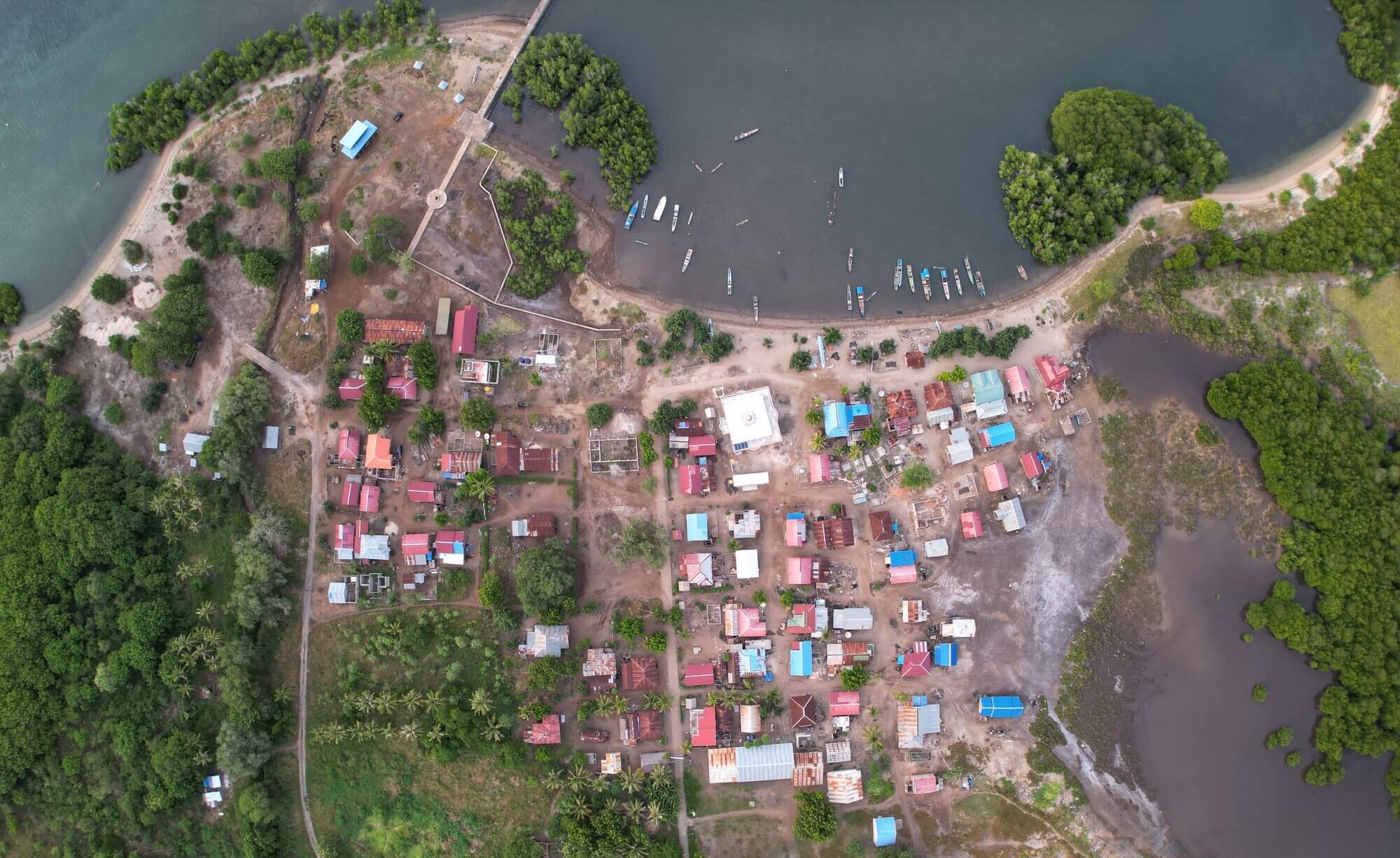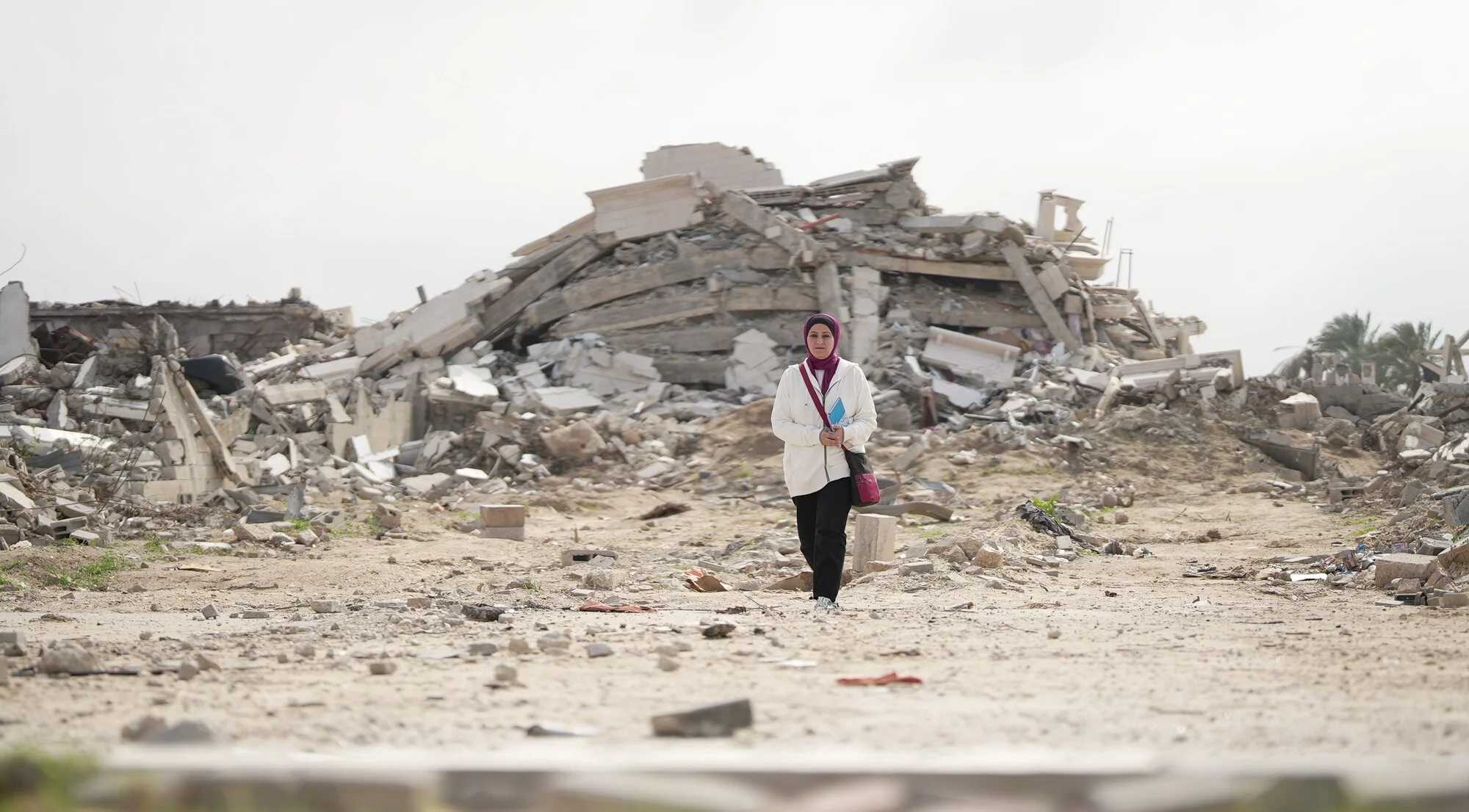Lorna Jane is the first brand on the What She Makes Company Tracker to pay a living wage.
In massive news for the seven-year-old campaign, activewear brand Lorna Jane have demonstrated to Oxfam that all garment workers in their factory, including the lowest paid workers, are receiving a living wage.
This is great news! How did we get here?
Lorna Jane was added to the What She Makes Company Tracker in 2021. They were the first ath-leisure brand to be included in the list of companies we’re watching. After an initial poor ranking in the Naughty or Nice List that year, Lorna Jane quickly bounded to the head of the pack.
In 2022, brands were asked to take a close look at workers’ wages by committing to conduct a ‘wage gap analysis,’ which involves calculating the difference between current worker wages and the living wage, then making a plan to bridge that gap. This is called ‘Publish Your Plans’ and is Step 4 on the Company Tracker.
In a fast turnaround, by the time the 2022 Naughty or Nice list was released, Lorna Jane had leapfrogged other brands to be the classified as ‘nicest’ – the only brand to both commit AND publish the results of the wage gap analysis.
The remaining action was to make a plan to bridge the pay gap to ensure workers were paid a living wage. Lorna Jane have now completed this crucial step – and have made it to the final stage ‘Pay a Living Wage – Step 5.’
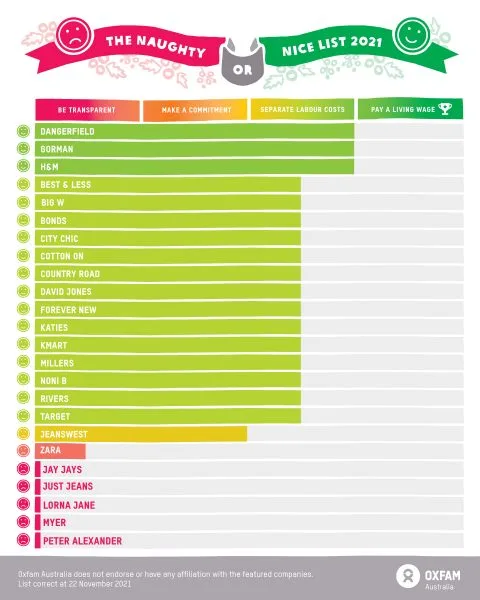
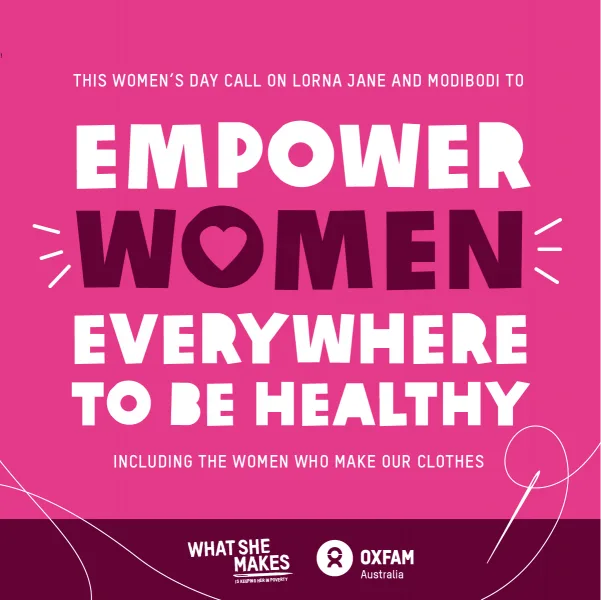
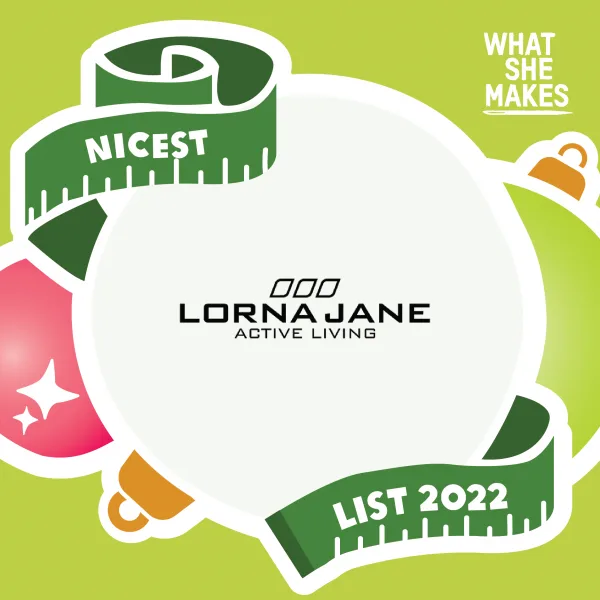
Lorna Jane’s journey to a living wage
Lorna Jane could jump ahead quickly for two simple reasons 1) a real commitment to living wages and 2) having only one factory where their clothes are made – their supplier Active Apparel Group (AAG) exclusively produces all their garments.
At their one factory, Longson Ningbo Garments, in Ningbo City, south of Shanghai, Lorna Jane and AAG randomly sampled 401 employees, across a range of wage classifications. They concentrated their data analysis on the lowest paid workers and identified that 14% of the sampled employees were paid below a living wage.
Working with an agency, Bureau Veritas, Lorna Jane and AAG also calculated the living wage benchmark for Ningbo City. Usually, brands use an established benchmark (like Anker, which provides a monetary figure for the monthly living wage,) however the nearby cities with an Anker benchmark were too dissimilar to Ningbo City. With the information about how much the lowest paid workers were getting paid, plus the living wage benchmark amount, they could then work out the difference in pay and take action to bridge the gap for the 272 employees in the factory that were paid below a living wage. Factory owners AAG back paid workers to 1 January 2023, and have demonstrated workers are receiving a living wage.
Lorna Jane have assured Oxfam they will monitor wages regularly. It’s a requirement of Step 5, Pay a Living Wage to update the findings every 12 months.
How did Oxfam assess what Lorna Jane and Bureau Veritas provided?
Oxfam closely examined the living wage audit Bureau Veritas provided to Lorna Jane, reviewed pay slips from the lowest paid employees and evaluated their living wage benchmark. We ensured the benchmark covers each element of a living wage – a decent standard of living for a worker and their family, earned in no more than 48 hours, that includes food, housing, healthcare, clothing, education, transportation, utilities, plus savings.
We assessed their documents and evidence using our Wage Gap Analysis checklist, developed by our technical experts. The process took over 12 months of seeking additional information, further clarification and triple checking the evidence provided. We held many meetings with Lorna Jane and AAG representatives, who also attended Oxfam training sessions.
At the completion of our due diligence process, we are satisfied with the information provided and deemed the Wage Gap Analysis sufficient. After reviewing pay slips from the lowest paid employees, we were able to confirm the wage gap had been closed and those workers are now paid a living wage.
What about other brands?
Lorna Jane have demonstrated what’s possible for alike brands with small supply chains. We’d love to see similar sized brands, like Modibodi for example, also take these steps. Many other brands on the Company Tracker have dozens or even hundreds of factories, so we acknowledge the process can take longer for them.
Other brands are actively working to conduct a wage gap analysis. Currently Bonds, City Chic, Cotton On, Country Road, David Jones, Factory X (Dangerfield and Gorman), Forever New, Just Group (Just Jeans, Peter Alexander etc) and Myer have made this commitment. Some have elected to begin with a sample of factories, like their strategic factories.
We urge the brands who have yet to make a commitment to Step 4, Publish Your Plans to catch up to the others and get started on a wage gap analysis – Best&less, Big W, H&M, Jeanswest, Kmart, Modibodi, Target, Uniqlo and Zara.
Thanks to you…
Lorna Jane, like other brands, really pay attention to what their customers think. Thousands of people over the last few years have urged the brand to take action, so they couldn’t ignore you – they had to act.
It’s thanks to conscious shoppers like you, who care about the women who make our clothes, that we are now able to announce that Lorna Jane is paying a living wage. Well done.
See how other brands are tracking
What is a wage gap analysis?
WGA is a key step in an evidence-based plan to improve wages for the women who make our clothes. It allows brands to measure the gap between current prevailing wages and living wages, and create a plan to bridge that gap.
A WGA involves collecting data on how much the employees in the factory are paid (prevailing wage.) Brands then compare the prevailing wages of the lowest paid workers to the living wage benchmark relevant to that factory.
Once data has been collected, brands can analyse the results and create specific time-bound targets and milestones to close the gap between the lowest paid employee and the living wage.
Where is Lorna Jane’s factory? Have you travelled there to verify Lorna Jane’s claims?
Ningbo Longson Garments Co.,Haishu District, Ningbo City, Zhejiang Province. There are 1945 employees (62% women.)
As an Australia-based NGO, Oxfam does not have the resources to speak directly to workers in factories. Lorna Jane’s wage gap analysis included worker consultation. Ideally, the wage gap analysis would include consultation with unions, however as the factory is in China, that wasn’t possible.
DISCLAIMER
Oxfam Australia relies on the information and documents provided by Lorna Jane Pty Ltd (Lorna Jane) and Active Apparel Group Pty Ltd (AAG) as evidence that Lorna Jane is paying a living wage to all workers at their Tier One (final stage) factory. A living wage means a person is paid enough to live a decent and dignified life – for themselves and their families. Supplier AAG exclusively owns the factory in China responsible for producing 100% of Lorna Jane’s apparel, Ningbo Longson Garments Co in Zhejiang Province. As an Australian-based NGO, Oxfam Australia is unable to verify evidence on-the-ground in China. However, following review by Oxfam Australia and from the results of Lorna Jane’s Wage Gap Analysis, Oxfam Australia is satisfied that as at October 2024, all workers at AAG’s factory are paid a living wage.
